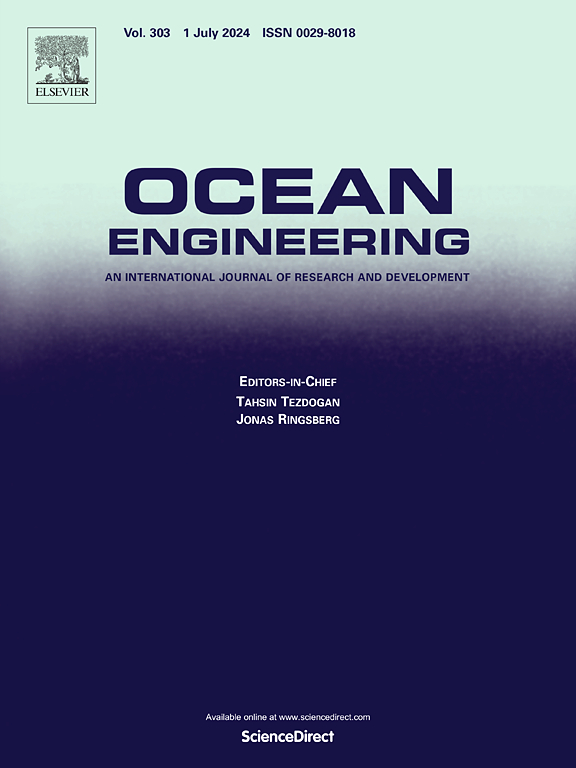Analysis of dynamic response of a transmission tower under downburst wind-wave loads
IF 4.6
2区 工程技术
Q1 ENGINEERING, CIVIL
引用次数: 0
Abstract
Under downburst conditions, the intricate wind-wave conditions for offshore transmission towers limit the accurate configuration of combined wind-wave loads and dynamic analysis. This study aims to establish the theoretical framework for the efficient dynamic analysis method associated with the reasonable load configuration. Based on the laboratory test, the downburst-generated wave's power spectral density is formulated, leading to the combined stochastic downburst wind-wave load. Thereby, the spectral representation method is employed to simulate the synchronous wind-wave loads. Furthermore, regarding the fluctuating component of combined load, an approximating method for dynamic analysis is developed by separating the response into background and resonant components, which is more efficient than the traditional time-domain and frequency-domain dynamic analysis methods. All the relevant equations are expressed in matrix form to facilitate using the modal analysis results obtained from the three-dimensional finite element model. Considering an offshore tower as the engineering background, the results show that the proposed approximating method effectively captures the tower's dynamic behavior with higher efficiency. A comparison of the dynamic response results, corresponding to the load cases involving and not involving wind-wave coherence reveals negligible deviation, indicating that the cross-power spectral density of wind and wave loads can be ignored in the analysis.
求助全文
约1分钟内获得全文
求助全文
来源期刊

Ocean Engineering
工程技术-工程:大洋
CiteScore
7.30
自引率
34.00%
发文量
2379
审稿时长
8.1 months
期刊介绍:
Ocean Engineering provides a medium for the publication of original research and development work in the field of ocean engineering. Ocean Engineering seeks papers in the following topics.
 求助内容:
求助内容: 应助结果提醒方式:
应助结果提醒方式:


